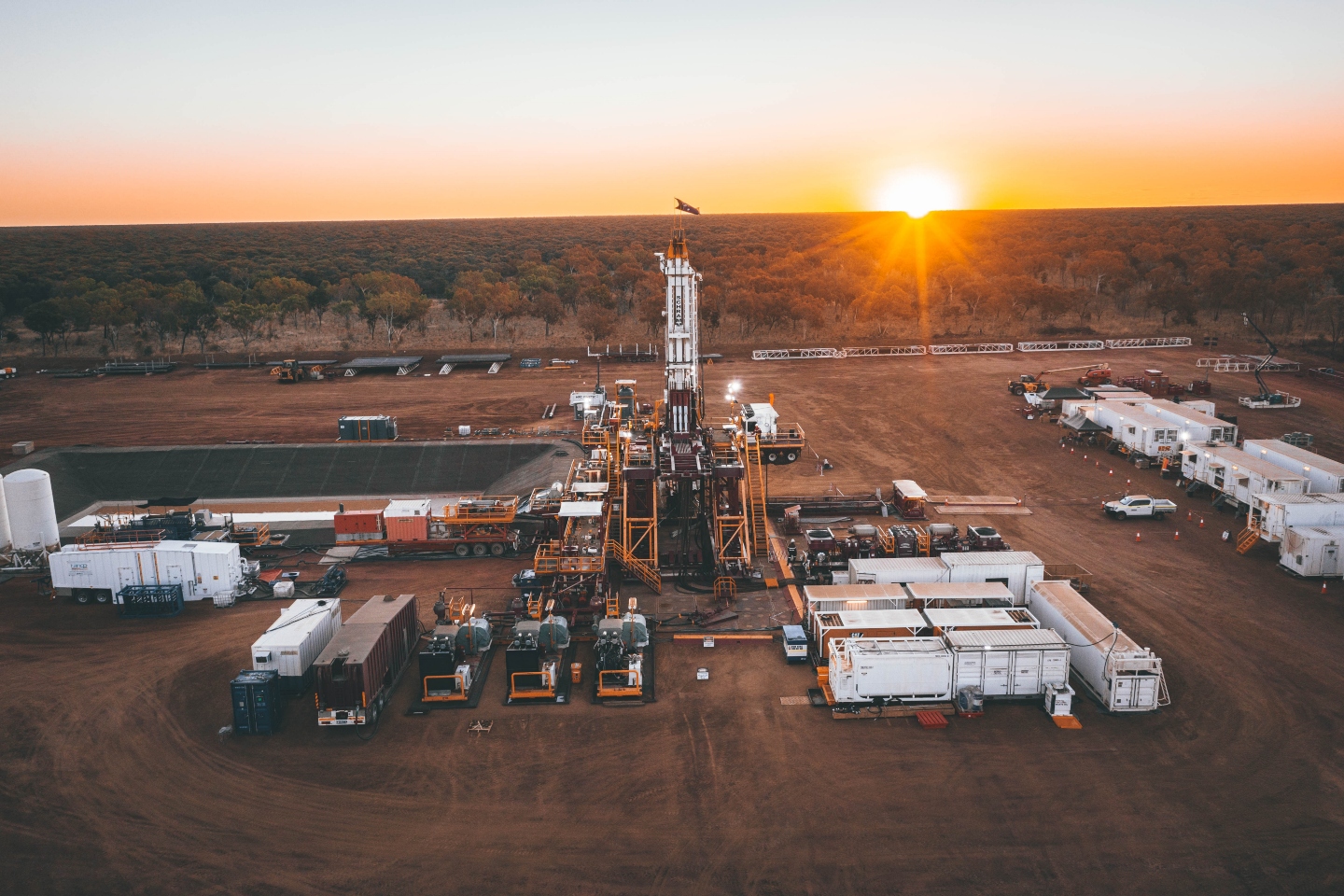Empire Energy has started the much-awaited fracking of its Carpentaria-2H well, the longest horizontal well drilled in the Beetaloo sub-basin as it attempts to unlock the potential of the prospective multi-trillion cubic feet NT gas play. The company has pumped the first of a 25-stage frack in its 1250m-long hydraulic stimulation program it is planning for last year’s C-2H gas discovery.

Empire Energy has started the much-awaited fracking at its Carpentaria-2H well, or “C-2H”, the longest horizontal well drilled in the Beetaloo sub-basin as it unlocks the potential of its highly prospective Northern Territory gas play. It has pumped the first of a 25 stage frack in its 1250-metre-long hydraulic stimulation program it is planning for last year’s C-2H gas discovery.
Empire is testing a number of frack fluid mixes to discover which design will achieve the best production performance as it pioneers frack completion permutations specific to the Beetaloo Basin. Frack programs can be unique to each region due to geological and reservoir conditions.
The C-2H well production test will provide an early production-type curve and a better understanding of gas composition in developing a full field development plan, including processing and gas handling facilities.
Empire is planning an extended production test for up to 90 days on C-2H once the hydraulic stimulation fluids have progressively cleaned up from each of the fracked stages.
Management says the company also remains on track to drill the Carpentaria-4V vertical well, or “C-4V” in the Carpentaria East area of the EP187 block and then drill, hydraulically stimulate and flow-test the proposed Carpentaria-3H horizontal well later this year.
It would be spudded in from the same well pad as Carpentaria-2H, reducing its environmental footprint and siteworks costs.
Notably C-4V is in an undrilled area of the basin to the east of a saddle feature, mapped on seismic that, if successful, would add upside to Empire’s Beetaloo Basin story. It has previously reported the blue-sky potential in the trillions of cubic feet of gas.
Empire said independent consultant Netherland, Sewell and Associates calculated a 1C low estimate, the most conservative grading, for resource of 81 billion cubic feet, or “bcf” of gas for the relevant permit area.
The result comes after a year of drilling and remapping the reservoir after incorporating the results of a 164km 2D seismic program shot over the Carpentaria area.
Oilfield contingent reserves figures usually range between three parameters: 1C being the most conservative estimate; 2C a mid-range, “probable” figure and 3C being the “blue sky” high-case estimate.
The headline number standing out was the upgraded, mid-range 2C best estimate figure of 396 bcf, up from the previously modest 41 bcf, an 866 per cent increase.
Empire Energy Managing Director, Alex Underwood said: “Utilising world-class US and Australian fracking expertise, we are carrying out various stimulation techniques that will help us optimise frack design as we move towards commercialising the Beetaloo.”
“Later this drilling season we will drill two more wells, including a fracture-stimulated horizontal in which we will apply the learnings of our current fracture stimulation job.”
Underwood noted this work was Empire’s largest program so far and will be transformational for the company in its ambition to be the first Beetaloo operator to enter commercial production.
Empire Energy has plenty in the tank to keep going with a current cash balance, excluding a current share purchase plan of almost $44 million. It has almost another $20 million in reimbursable grants to draw down from the Federal Government’s Beetaloo Cooperative Drilling Program that aims to accelerate development of the Beetaloo basin as a potential world-class gas province and to aid commercial investment decisions.
Is your ASX-listed company doing something interesting? Contact: matt.birney@businessnews.com.au













